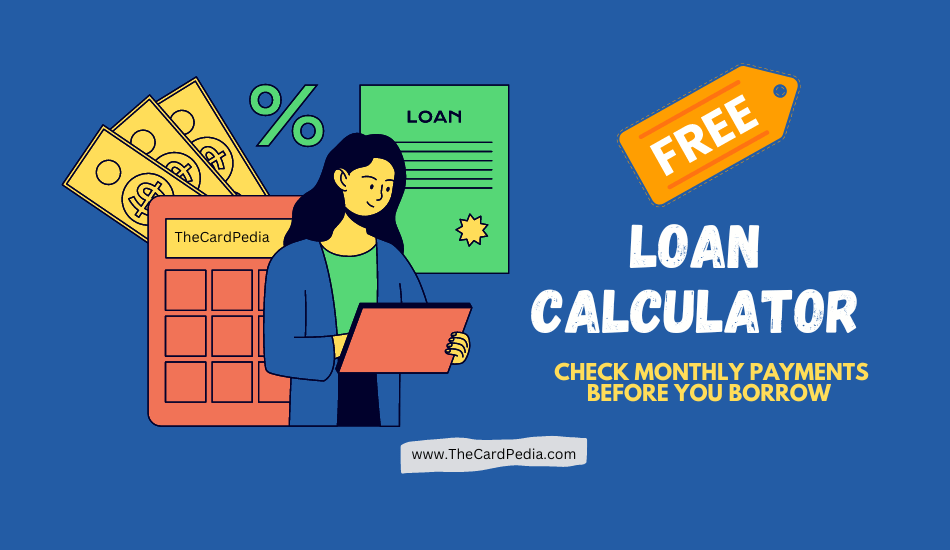Credit Card Interest Calculator: Input your current credit card balance and the interest rate associated with your account to find out how much you’ll be charged in interest for the month.
How to Use Credit Card Interest Calculator:
- Balance: Enter the amount of money you owe on your credit card. This is your current balance. Example: If you owe $1000, enter ‘1000’ in the box.
- APR (Annual Percentage Rate): Enter the interest rate charged by your credit card company as a percentage. This is the annual interest rate. Example: If your APR is 12%, enter ’12’ in the box.
- Days in Billing Period: Enter the number of days in your credit card billing period. This is typically the number of days between the start and end of your billing cycle. Example: If your billing period is 30 days, enter ’30’ in the box.
- Click the Calculate button: After entering the required information, click the Calculate button to see the interest charge for this statement cycle.
Credit Card Interest Calculator
This Credit Card Interest Calculator is intended for educational purposes only and is based on typical practices in the credit card industry. The interest calculated here may differ from the actual interest charged by your issuer, which can vary based on your specific card activity and issuer policies.
How Does Credit Card Interest Work?
Credit card interest occurs when you don’t pay off your full balance before the due date. If you leave any amount unpaid, you’ll be charged interest on it. However, if you pay your full balance each month, you won’t accrue any interest on your purchases.
The interest you’re charged is shown as an Annual Percentage Rate or APR. This rate might be fixed or variable and could change over time. While the APR is calculated annually, interest is actually compounded daily. So, to figure out the daily rate applied to your balance, divide the APR by 365 days. This daily rate is then added to your balance every day it’s not fully paid off, causing it to grow over time.
Many credit cards offer a grace period to help you avoid paying interest. As long as you pay your full bill before the end of the billing cycle, you won’t be charged any interest. However, this grace period doesn’t apply to cash advances, and if you carry a balance, you might lose the grace period. To regain it, you’ll need to make on-time, full payments.
Strategies to Avoid Paying Interest on Credit Cards
- Paying Off the Full Balance: Make sure to pay off your entire credit card balance each month to avoid accruing any interest charges.
- Utilize Grace Periods: Take advantage of the grace period offered by many credit cards by paying your balance in full before the end of the billing cycle.
- Avoid Cash Advances: Cash advances often come with higher interest rates and no grace period, so it’s best to avoid them whenever possible.
- Set Up Automatic Payments: Ensure timely payments by setting up automatic payments to cover at least the minimum amount due each month.
- Monitor Spending: Keep track of your spending to avoid exceeding your credit limit and incurring additional fees or higher interest rates.
- Negotiate Lower Rates: Contact your credit card issuer to inquire about lowering your interest rate, especially if you have a good payment history.
- Use Balance Transfer Offers: Consider transferring high-interest balances to a card with a lower promotional rate to reduce overall interest costs.
- Review and Understand Terms: Familiarize yourself with your credit card’s terms and conditions, including interest rates, fees, and grace periods, to make informed financial decisions.
Factors Affecting Credit Card Interest
- Credit Score: Your credit score plays a significant role in determining the interest rate you’re offered. Higher credit scores typically qualify for lower interest rates, while lower scores may result in higher rates.
- Economic Factors: Overall economic conditions, such as inflation rates and market trends, can impact credit card interest rates. Changes in the Federal Reserve’s monetary policy also affect rates.
How APR Works
APR, or Annual Percentage Rate, represents the cost of borrowing on a yearly basis. It includes both the interest rate and any additional fees charged by the lender. While APR is expressed as an annual rate, interest accrues daily on your outstanding balance.
To calculate the daily interest rate, divide the APR by 365 days. This daily rate is then applied to your balance each day it remains unpaid. Understanding APR helps consumers compare the cost of borrowing across different credit cards and loans.
🌎🚀 Also Check our blog: What is APR: Your Guide to Choosing the Right Credit Card
At TheCardPedia.com, we’re your trusted guide to mastering credit cards. Explore expert insights, trends, and tips to make savvy financial choices. Start your journey to financial empowerment now!




